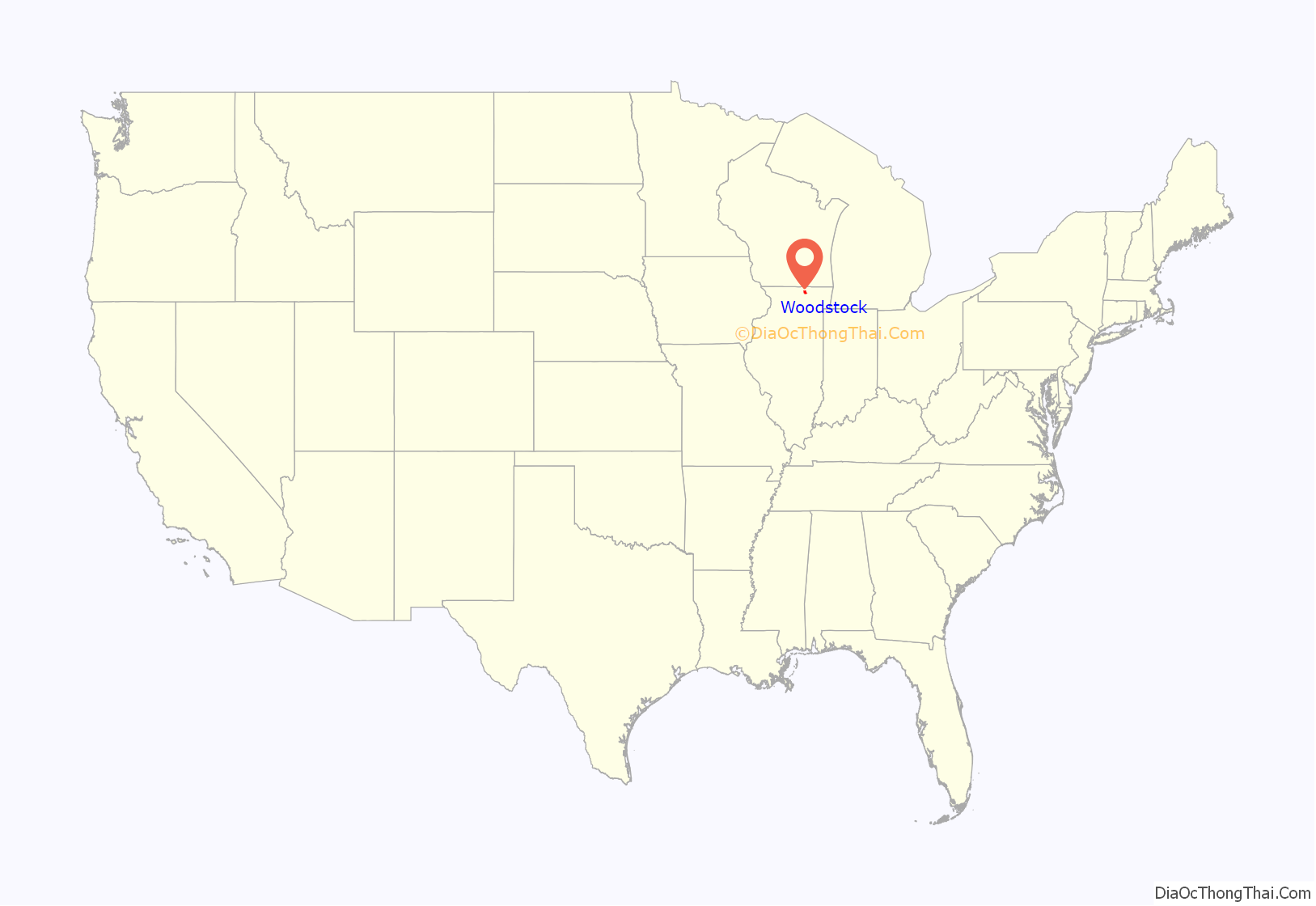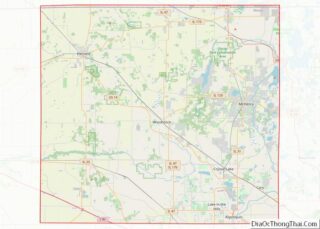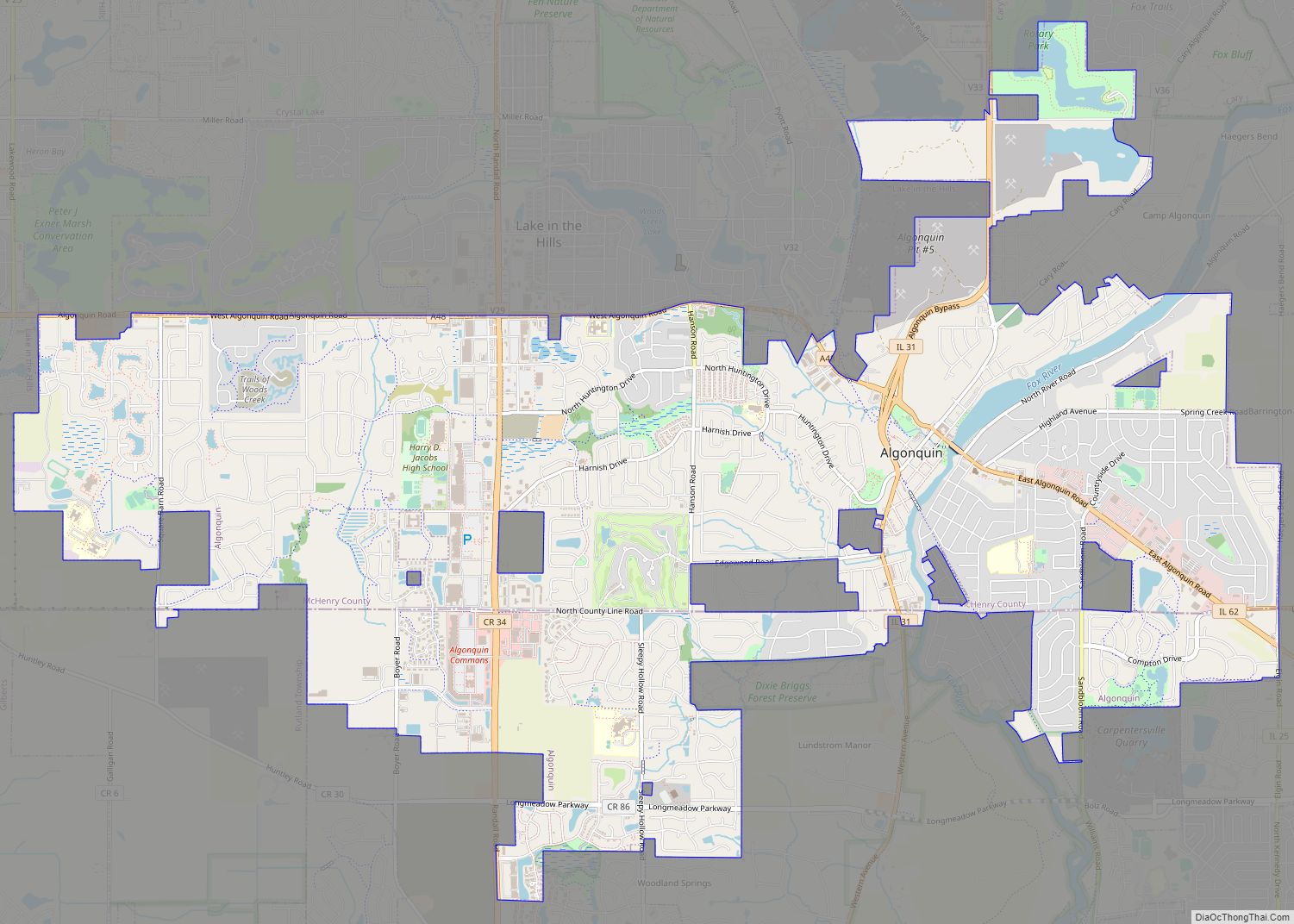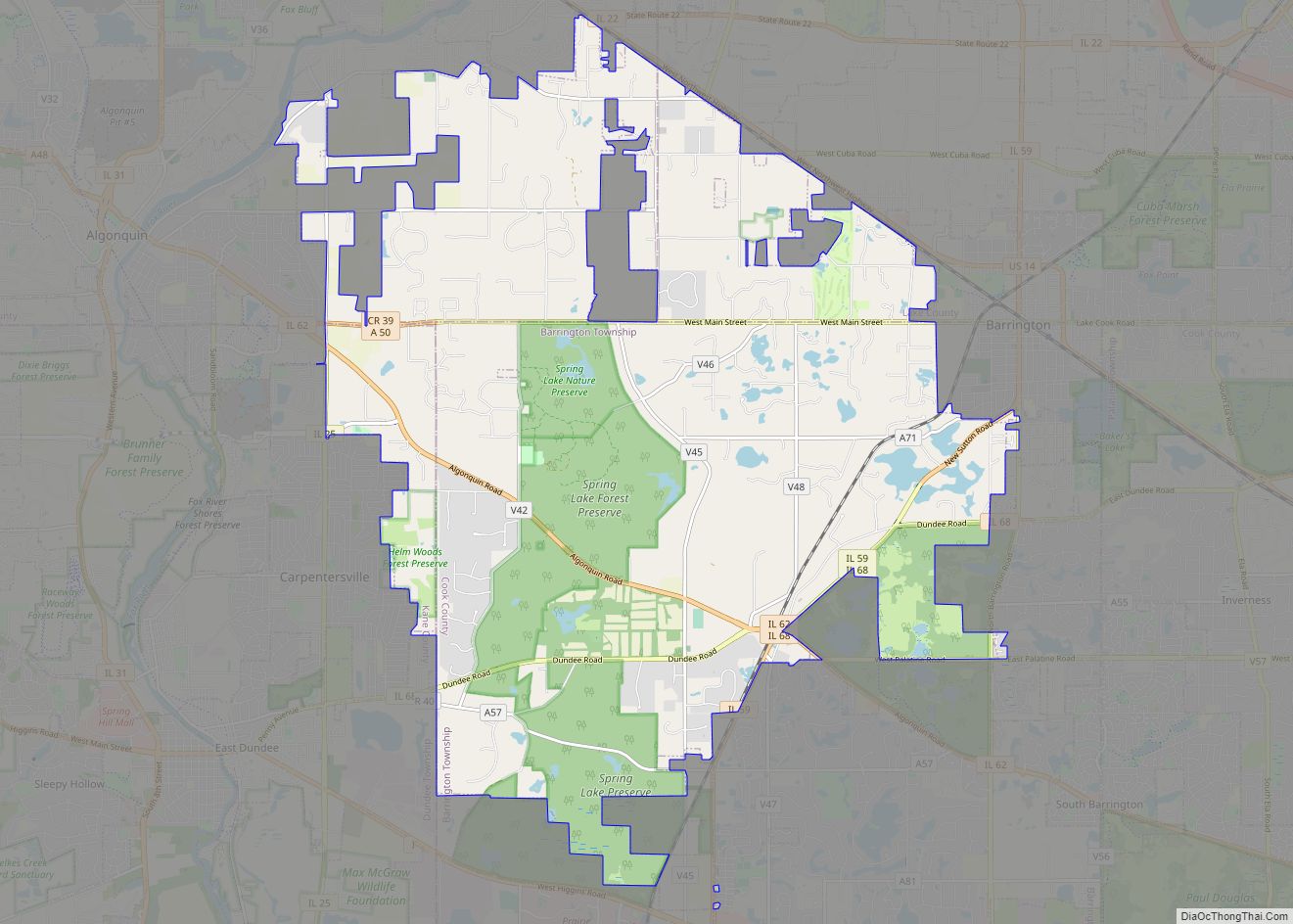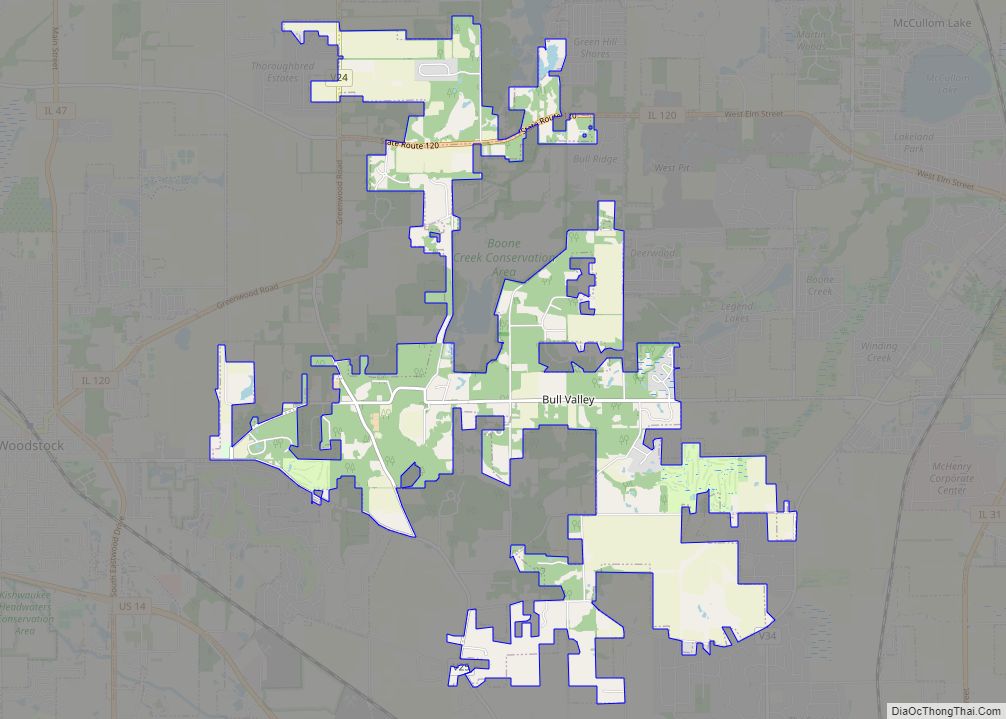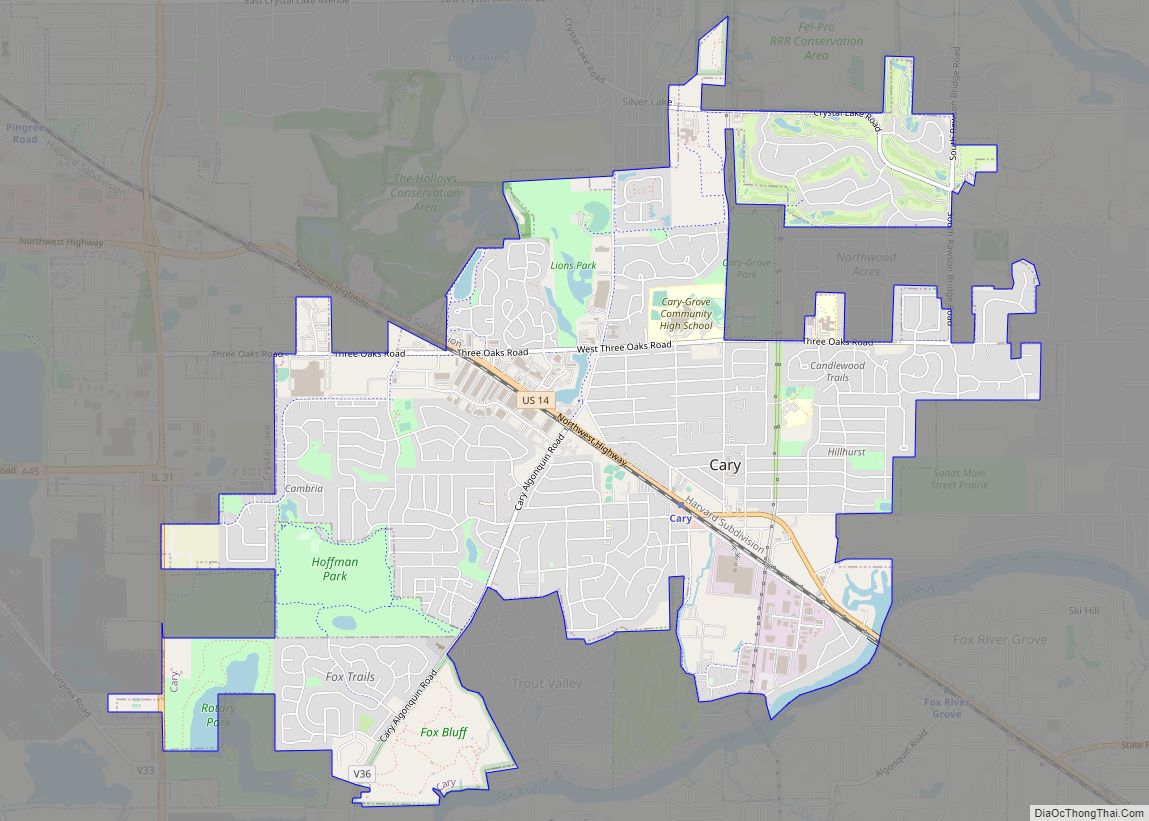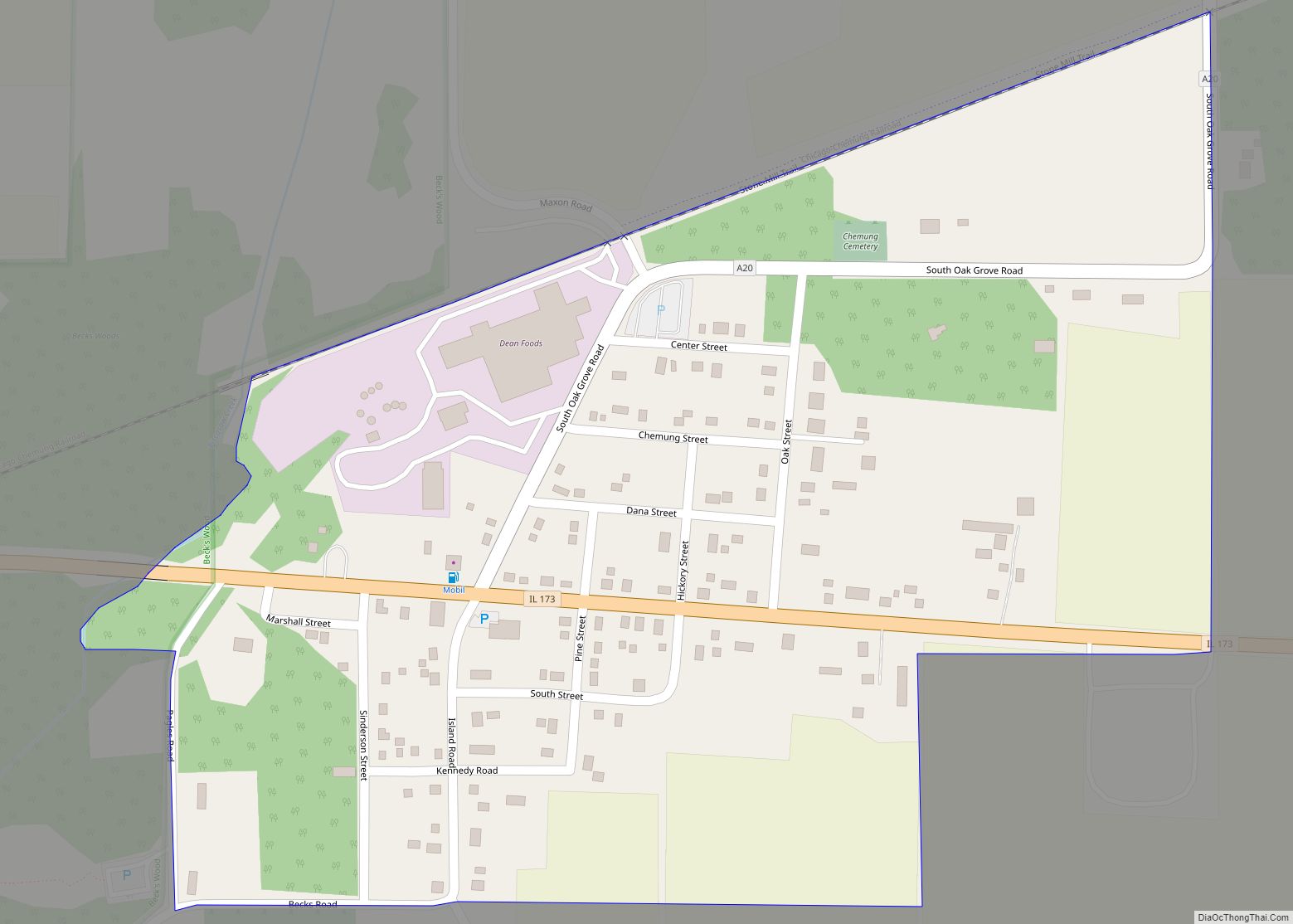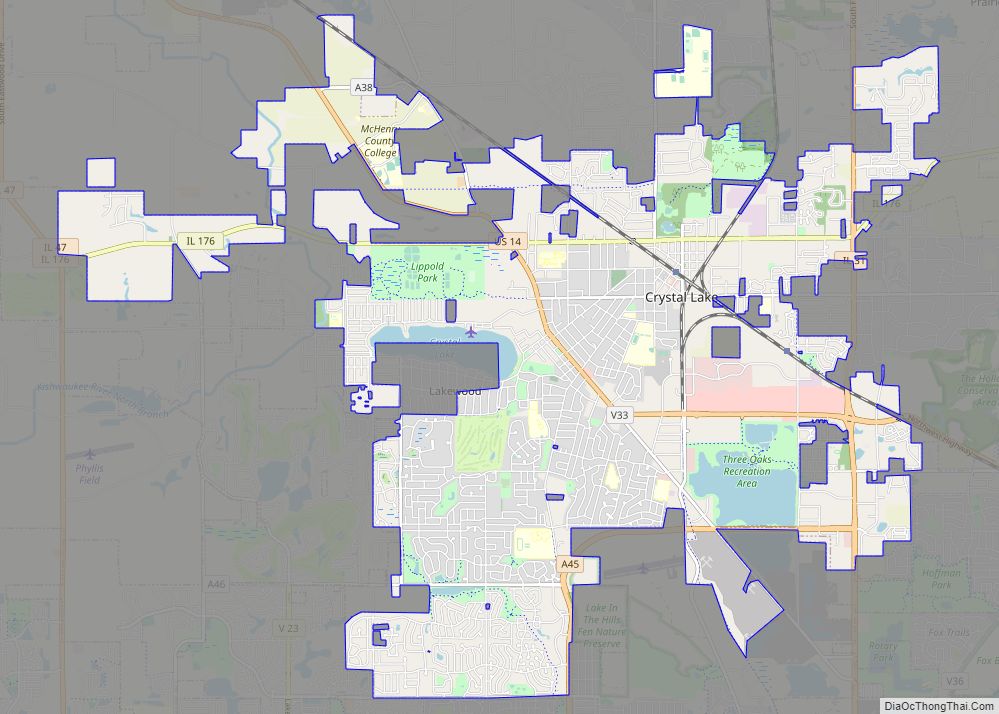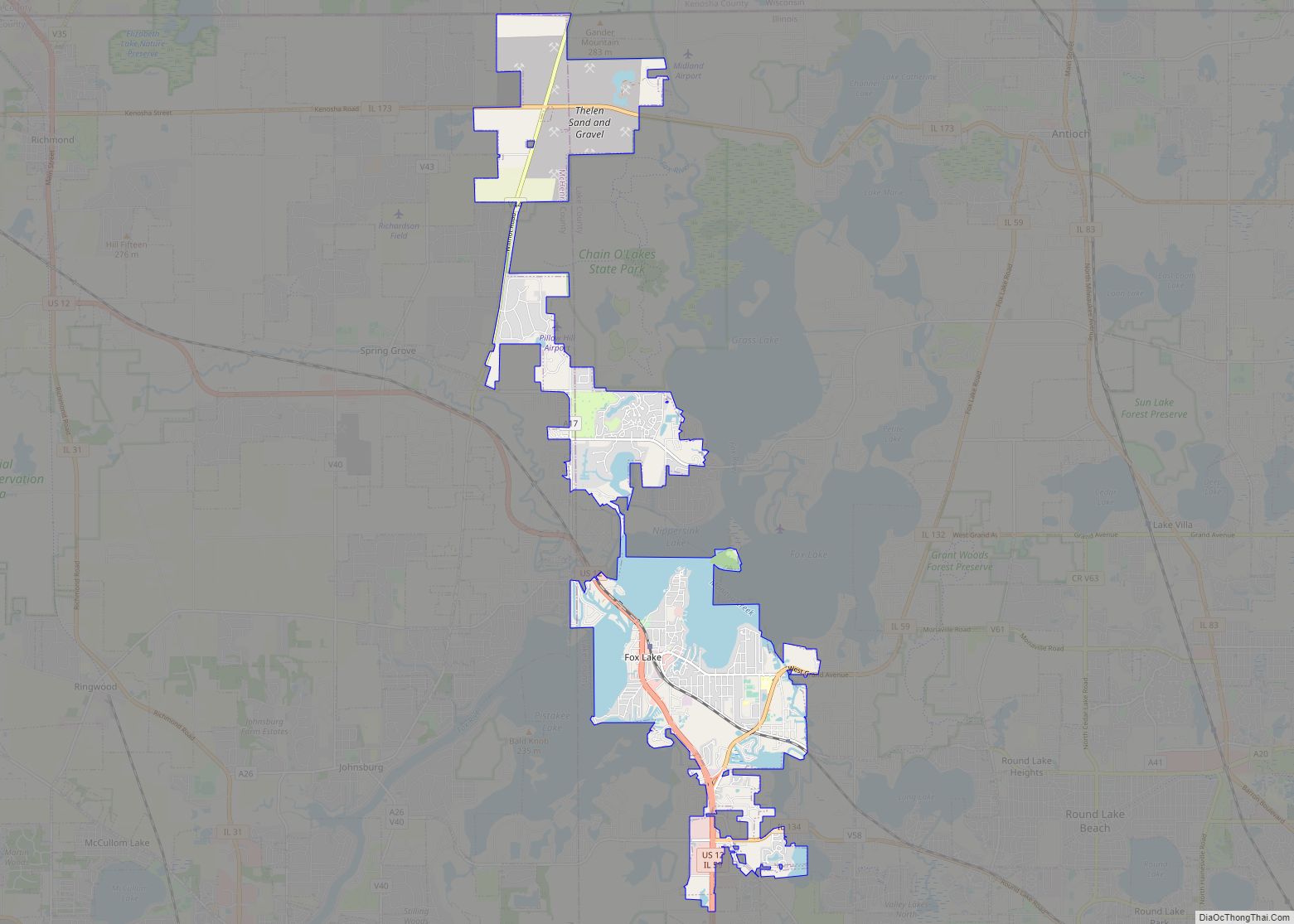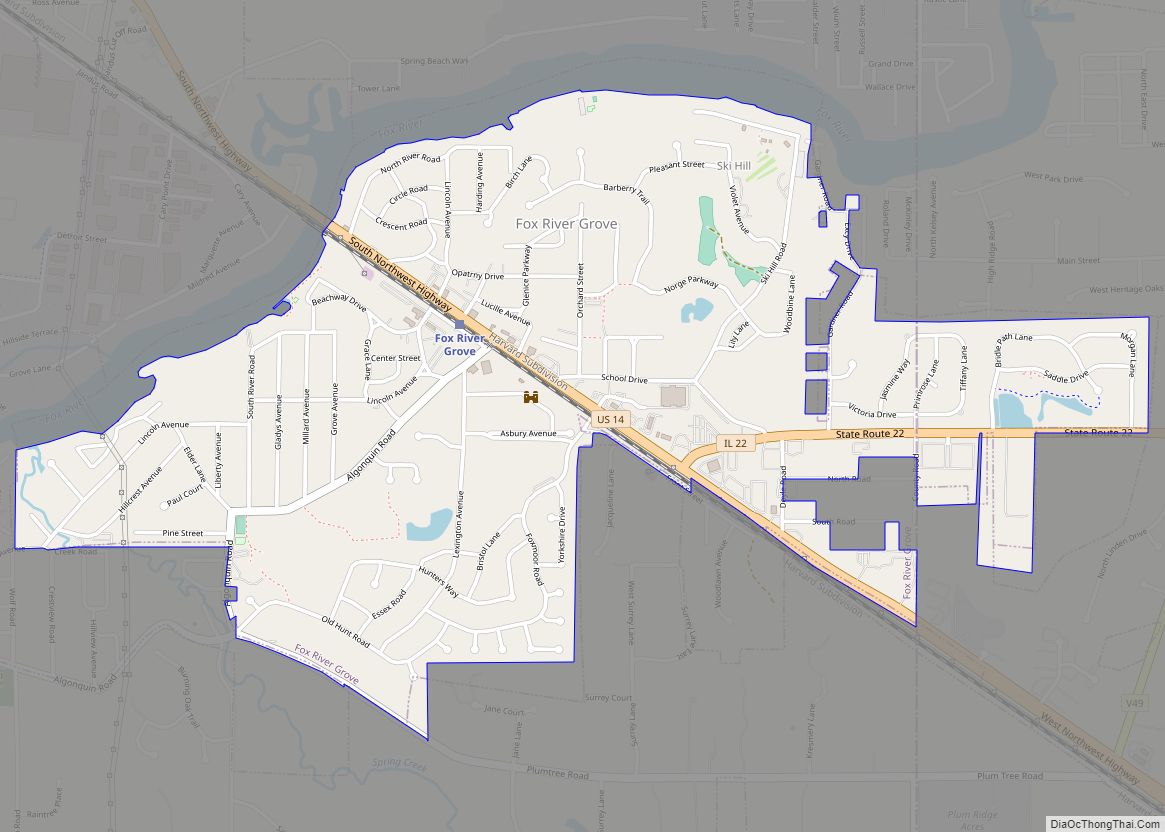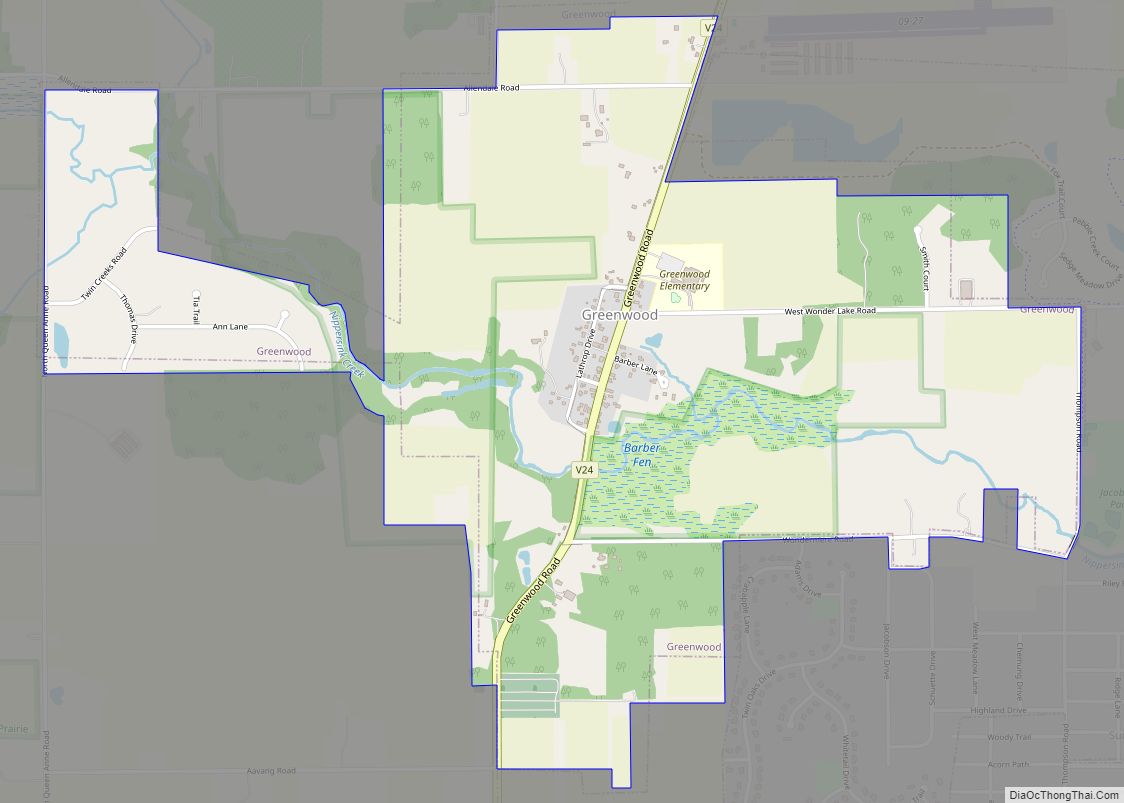Woodstock is a city in (and the county seat of) McHenry County, Illinois, United States. It is located 45 miles northwest of Chicago, making it one of the city’s outer-most suburbs. Per the 2020 census, the population was 25,630. The city’s historic downtown district and turn-of-the-century town square is anchored by the landmark Woodstock Opera House and the Old McHenry County Courthouse. In 2007 Woodstock was named one of the nation’s Dozen Distinctive Destinations by the National Trust for Historic Preservation.
| Name: | Woodstock city |
|---|---|
| LSAD Code: | 25 |
| LSAD Description: | city (suffix) |
| State: | Illinois |
| County: | McHenry County |
| Founded: | 1852 |
| Total Area: | 13.19 sq mi (34.15 km²) |
| Land Area: | 13.19 sq mi (34.15 km²) |
| Water Area: | 0.00 sq mi (0.00 km²) |
| Total Population: | 25,630 |
| Population Density: | 1,943.58/sq mi (750.41/km²) |
| Area code: | 815/779 847 |
| FIPS code: | 1783349 |
| Website: | www.woodstockil.gov |
Online Interactive Map
Click on ![]() to view map in "full screen" mode.
to view map in "full screen" mode.
Woodstock location map. Where is Woodstock city?
History
Early days, Centerville
Woodstock was originally known as Centerville because of its location at the geographic center of McHenry County. It was chosen as the county seat on September 4, 1843. Early settler Alvin Judd developed a plat for the town, which incorporated a two-acre public square, near which a 2-story frame courthouse and jail were constructed the following year by George C. Dean and Daniel Blair.
In 1845, prominent resident Joel Johnson proposed that Centerville be given a more original name, and the town was renamed Woodstock after Johnson’s hometown of Woodstock, Vermont. The town was still listed as “Center” on the 1850 Federal Census. In 1852, Woodstock was incorporated as a village with Judd as president. In response to a growing population following the end of the Civil War, Woodstock was incorporated as a city in 1873.
John S. Wheat was elected as Woodstock’s first mayor. A vital artery for the growing town was the train line to and from Chicago, which allowed for a substantial industrial presence early in the town’s history.
Eugene V. Debs’ prison stay
In 1895, Eugene V. Debs served a short federal prison sentence in the Woodstock Jail following the 1894 Pullman labor strike in Chicago. Debs, the former president of the American Railway Union, was held in Woodstock instead of Chicago because federal officials feared that he would be surrounded with too many sympathizers in a Chicago prison and therefore could have still incited further unrest. Debs was instead assigned to a cell in the newly constructed Woodstock Jail, which occupied the lowest floor of the Woodstock Courthouse on the town square.
During his time in the jail, Debs received several influential socialist visitors and encountered the works of Karl Marx. He is said to have considered the Woodstock Jail one of the “greatest school[s],” and passed his time reading and writing many letters from his cell. By the time he was released in November 1895 (to great fanfare and before crowds of onlookers assembled in the Woodstock Square), Debs had become a socialist and a national celebrity. He later ran for the United States Presidency five times between 1900 and 1920 as the candidate for the newly formed Social Democratic Party.
“Typewriter City”
During the early part of the 20th century, Woodstock had become “Typewriter City” and was home to factories of both the Emerson Typewriter Company and the Oliver Typewriter Company. Woodstock workers had built more than half the world’s typewriters by 1922. The companies were very much a part of civic life in Woodstock during this time. Both factories had active social clubs, baseball teams that competed against one another, and Emerson had a well-regarded band that played at public events.
In 1919, Emerson Typewriter became the Woodstock Typewriter Company. The city grew and flourished with increasing demand for Woodstock typewriters through and after World War II. Initially the company sold typewriters for use in the war effort both domestically and abroad, but after the war’s end returning servicemen, now familiar with the Woodstock brand, chose these models for their households. The factory was in use until 1970, and has since been converted into lofts.
Main Street looking north, circa 1910
Typewriters in a Woodstock business’ window in 2013. Note the name “Woodstock” on some of them.
Orson Welles and the Todd School for Boys
Woodstock had an important role in the creative development of Orson Welles. In 1926, in the midst of a chaotic upbringing, he enrolled at the Todd School for Boys in Woodstock at age 10. His five-year stay there was his only formal education, and the town and school made an impression on the young Welles. Years later, in 1960, when asked where he thought of as his hometown, he replied “I suppose it’s Woodstock, Illinois, if it’s anywhere. I went to school there for four years. If I try to think of a home, it’s that.”
At Todd School, the young Welles came under the positive influence and guidance of Roger Hill, a teacher who later became the school’s headmaster. Hill provided Welles with an educational environment that supported his creativity, allowing Welles to concentrate on subjects that interested him. Welles performed and staged his first theatrical experiments and productions at Todd. He also performed at the downtown Woodstock Opera House, where the stage — the site of his American debut as a professional theatre director — is now dedicated to him.
Welles returned to Woodstock periodically after leaving school. In July 1934 at the age of 19, he coordinated the Todd Theatre Festival, a six-week summer festival at the Woodstock Opera House that featured Hilton Edwards and Micheál MacLiammóir of Dublin’s Gate Theatre. His short film The Hearts of Age was shot on the Todd School campus during the festival.
Todd School for Boys closed in 1954. Several original buildings were purchased at auction and reused by Marian Central Catholic High School and Christian Life Services. Welles’ former dormitory was demolished in 2010.
Woodstock Road Map
Woodstock city Satellite Map
Geography
In the 2010 census, Woodstock has a total area of 13.55 square miles (35.09 km), all land.
See also
Map of Illinois State and its subdivision:- Adams
- Alexander
- Bond
- Boone
- Brown
- Bureau
- Calhoun
- Carroll
- Cass
- Champaign
- Christian
- Clark
- Clay
- Clinton
- Coles
- Cook
- Crawford
- Cumberland
- De Kalb
- De Witt
- Douglas
- Dupage
- Edgar
- Edwards
- Effingham
- Fayette
- Ford
- Franklin
- Fulton
- Gallatin
- Greene
- Grundy
- Hamilton
- Hancock
- Hardin
- Henderson
- Henry
- Iroquois
- Jackson
- Jasper
- Jefferson
- Jersey
- Jo Daviess
- Johnson
- Kane
- Kankakee
- Kendall
- Knox
- La Salle
- Lake
- Lake Michigan
- Lawrence
- Lee
- Livingston
- Logan
- Macon
- Macoupin
- Madison
- Marion
- Marshall
- Mason
- Massac
- McDonough
- McHenry
- McLean
- Menard
- Mercer
- Monroe
- Montgomery
- Morgan
- Moultrie
- Ogle
- Peoria
- Perry
- Piatt
- Pike
- Pope
- Pulaski
- Putnam
- Randolph
- Richland
- Rock Island
- Saint Clair
- Saline
- Sangamon
- Schuyler
- Scott
- Shelby
- Stark
- Stephenson
- Tazewell
- Union
- Vermilion
- Wabash
- Warren
- Washington
- Wayne
- White
- Whiteside
- Will
- Williamson
- Winnebago
- Woodford
- Alabama
- Alaska
- Arizona
- Arkansas
- California
- Colorado
- Connecticut
- Delaware
- District of Columbia
- Florida
- Georgia
- Hawaii
- Idaho
- Illinois
- Indiana
- Iowa
- Kansas
- Kentucky
- Louisiana
- Maine
- Maryland
- Massachusetts
- Michigan
- Minnesota
- Mississippi
- Missouri
- Montana
- Nebraska
- Nevada
- New Hampshire
- New Jersey
- New Mexico
- New York
- North Carolina
- North Dakota
- Ohio
- Oklahoma
- Oregon
- Pennsylvania
- Rhode Island
- South Carolina
- South Dakota
- Tennessee
- Texas
- Utah
- Vermont
- Virginia
- Washington
- West Virginia
- Wisconsin
- Wyoming
